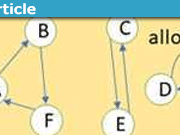How to Build a Definition for Heat
One of the most frustrating misconceptions in Thermodynamics centers on the actual definition of heat. Many science/engineering students often refer to a body as to be possessing heat, but as we shall see, to do so is completely nonsensical.
We start by examining the first law and defining each of its terms. The first law is simply a statement of the principle of conservation of energy and is often stated thus;
[tex]\Delta U = Q + W[/tex]
Where [itex]\Delta U[/itex] is the change in internal energy, Q is the heat added to the system and W is the work done on the system. So what do all these terms mean?
Table of Contents
Internal Energy
We define internal energy as the energy associated with the microscopic energies of the system, that is with the energy associated with the random motion of the molecules within a system. So for a general fluid, the internal energy of a system is the sum of the translational kinetic energies, the rotational kinetic energies, the vibrational kinetic energies, and the potential energies of all the molecules in that system. The internal energy of a system is often erroneously referred to as the heat of a system and we shall see why this is incorrect later. One important point to note here is that the internal energy is a state variable, that is, the change in internal energy between any two states is independent of the path taken.
Work
Well, if you’re reading this I assume that you know the definition of work; in thermodynamics, work is usually associated with a transfer of energy into or out of a system. An example of work specific to thermodynamics would be the application of a force to a piston, which would then compress the gas within the cylinder, thus doing work on the gas. Since work is being done on the gas the W term in our expression would be positive. If we assume that the walls of the cylinder are adiabatic (no heat transfer) then all the work done would be converted to internal energy. Suppose that after we have compressed the piston, we release it. Intuitively, we would expect the piston to recoil back, and this is exactly what happens; the gas expands and does [an equal amount of] work on the piston against atmospheric pressure. In this case, since it is the gas that is doing work, our W term would be negative.
Heat
So we have defined the internal energy of a system and we can quantify the work done on the system, but what about heat? First, let us examine the temperature. One useful definition of temperature is often called kinetic temperature and is derived from kinetic theory. Using kinetic theory the temperature of a system is taken to be a measure of the average translational kinetic energy associated with the random motion of the molecules with the system. It should be noted that although related to internal energy, the temperature is not directly proportional to internal energy since internal energy also involves the rotational and vibrational kinetic energies and the potential energies of the constituent molecules.
So, we come to the definition of heat. If we examine the first law, we can see that we can increase the internal energy of a system either by doing work on it or adding heat to it. Consider a piston and a cylinder filled with gas, we can increase the internal energy of the system by either compressing the gas by applying a force to the piston (work) or by fixing the piston and placing the cylinder in a flame (heat). We can compress and heat the gas in such a way that after the operation all the macroscopic properties (pressure, volume & temperature) are identical, that is the two cylinders are in identical states. Suppose we take two identical cylinders (but not necessarily in identical initial states) filled with a gas at 373K, one of which we compress and the other of which we heat such that both cylinders are at 473K and all their macroscopic quantities are identical, that is the final states of the two cylinders are identical. If we were to now examine the final states of the two cylinders, we have no way of knowing which was compressed and which was heated; the only conclusion we can draw is that their internal energies have increased. In this way, we can consider heat as the microscopic analogy of work (macroscopic).
I, therefore, offer you a formal definition of heat:
“Heat is the non-mechanical exchange of energy between the system and surroundings as a result of a difference in temperature”
Both work and heat can be considered as methods of transferring energy within or between systems. It should now be apparent why the statement “a body possesses heat” is nonsensical. To say that a body possesses heat is analogous to stating that a “body has worked”, which you must agree is utter rubbish. Rather, one transfers energy to a body by doing work on that body and one transfers energy to a body by heating or adding heat to that body. Similarly, it is incorrect to state that a body’s heat has increased, rather its internal energy has increased.
Sources
Some texts make use of the term “thermal energy” when discussing the “translational kinetic energy” of the molecules, I find that the term “thermal energy” only serves to confuse discussions further.
Further Reading
Thermal Physics, 2[sup]nd[/sup] Edition, C.B.P. Finn
Heat@Hyperphysics
Internal Energy@Hyperphysics
Written by Hootenanny. Edited by berkeman and Kurdt.
This article was authored by several Physics Forums members with PhDs in physics or mathematics.








Leave a Reply
Want to join the discussion?Feel free to contribute!